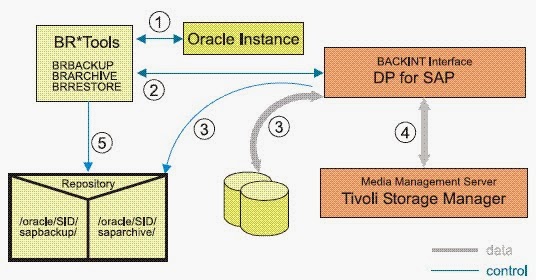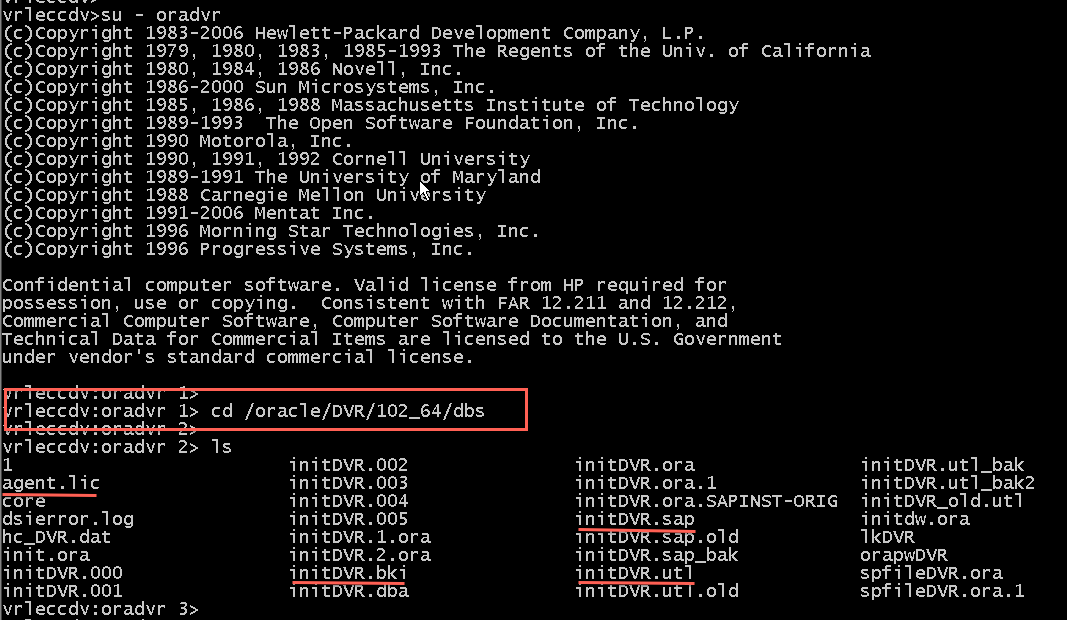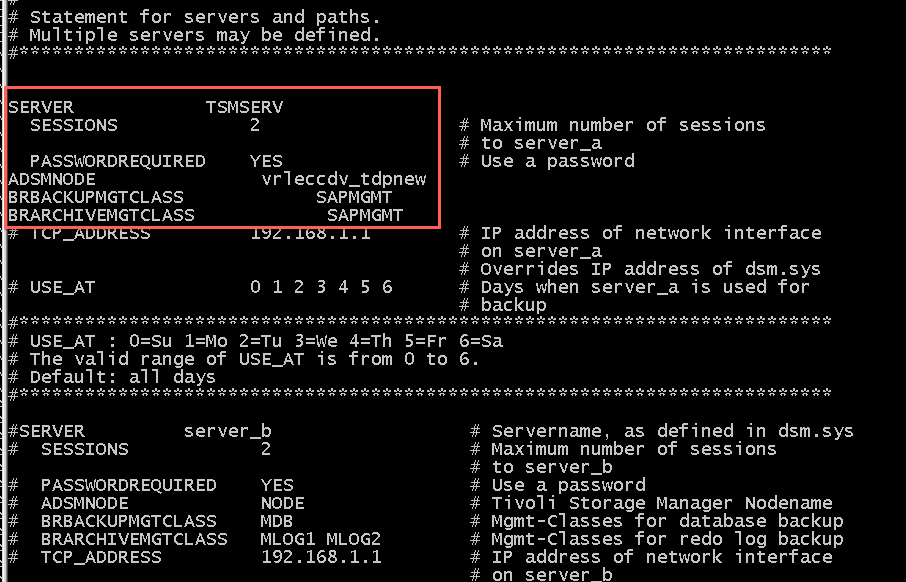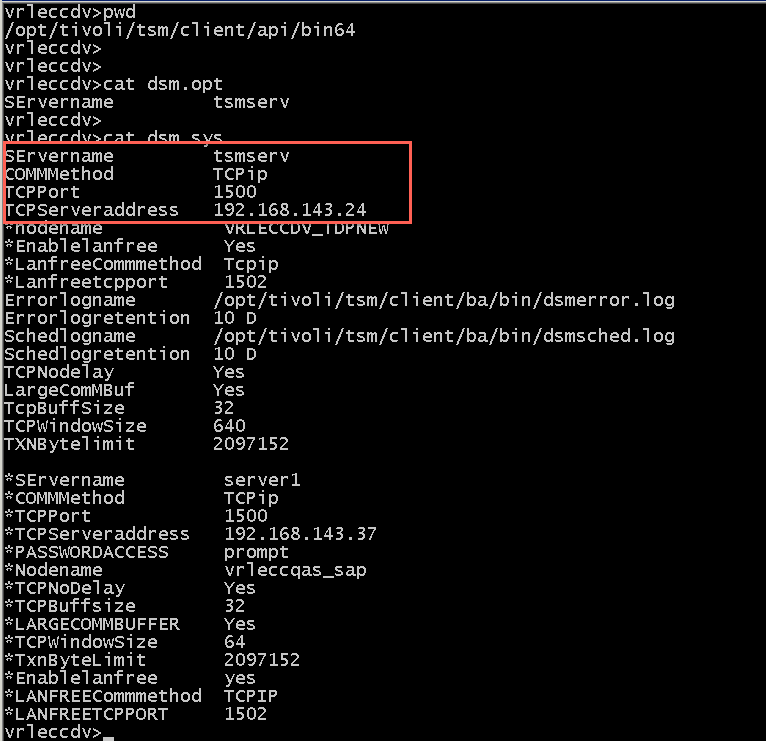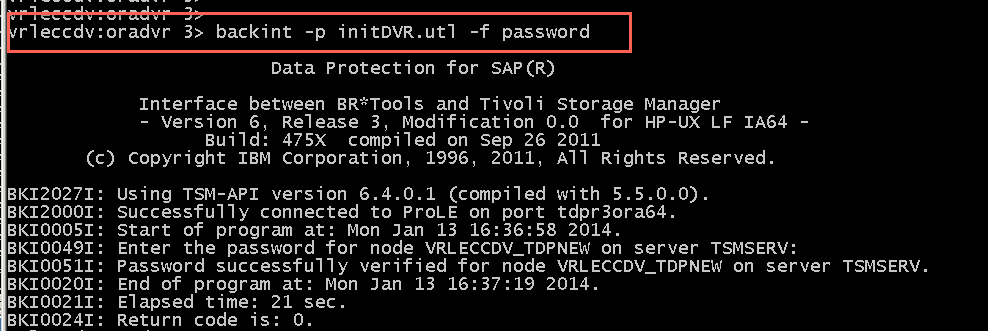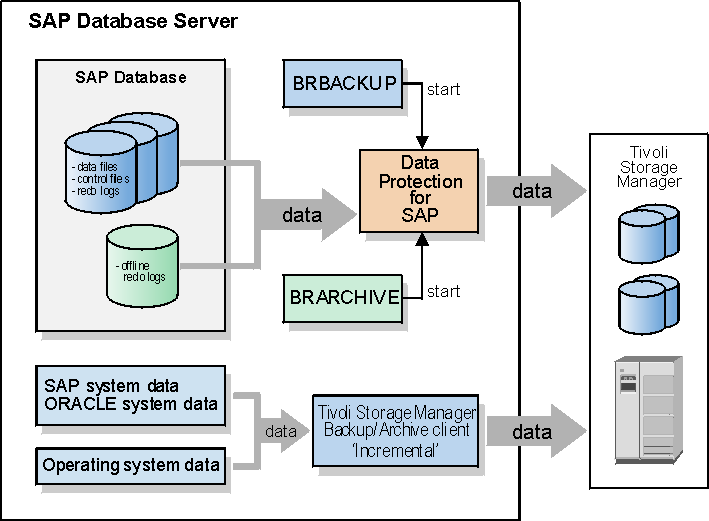To take SAP database backup using IBM TSM for ERP SAP, you can use the backup and recovery tools which are provided with SAP. Backup and recovery tools are either an integrated component of a relational database system, such as Oracle Recovery Manager (RMAN) or may be installed as an independent software package developed by a third party such as SAP BR*Tools for Oracle. In this post we will see how to configure TDP for SAP for taking SAP database backup using BR*TOOLS.
What are SAP BR*Tools ?
The SAP BRTools for Oracle is a package of utilities developed by SAP AG to protect and manage SAP data stored in Oracle databases. BR*Tools supports functions for online or offline, partial or full backups of database (BRBACKUP) and backup of archived redo logs (BRARCHIVE). It provides functions for database restore and recovery (BRRECOVER and BRRESTORE). BR*Tools can be used not only for database recoverability tasks, but it can also serve as a tool for creating homogenous database copies and can assist with database migration to different platforms or database versions. BR*Tools backup and restore functions can be accessed either from the user interface (BRGUI or BRTOOLS) or directly from the command line or script by executing the commands BRBACKUP, BRARCHIVE, BRRESTORE, and BRRECOVER. The BR*Tools executables are located in the
/sap/<SID>/SYS/exe/run directory.
BRBACKUP
BRARCHIVE
BRARCHIVE provides functions for offline redo log files backup in Oracle databases running in archiving mode. The redo log is the most important database component for a recovery from a crash, media failure, or user failure. Therefore, at least the production databases should be configured in archiving mode. To prevent the archivelog directory from filling up, BRARCHIVE should be executed periodically to move the offline redo logs from the the archive directory to the backup media. The most common use of BRARCHIVE is to back up the offline redo log files to backup storage and delete the backed up log files from the archivelog directory.
In addition to data files and redo logs, BRBACKUP and BRARCHIVE can also back up the following objects
- BR*Tools profiles init<SID>.ora and init<SID>.dba
- The BRBACKUP and BRARCHIVE logs
- The summary BRSPACE log space<SID>.log, the log of database structure changes struc<SID>.log, and the log of database parameter changes param<SID>.log.
BRRESTORE
BRRESTORE is used to restore the whole database or parts of it (data files, control files, and archive redo log files). Before BRRESTORE starts placing the data files back into the file system, it determines whether there is the appropriate free space on the file system. In addition to restoring data files, BRRESTORE can also recovers the directories and links.
BRRECOVER
Use the restore and recovery functions for Complete database recovery, Database point-in-time recovery, Tablespace point-in-time recovery, Whole database reset and complete Disaster recovery. BR*Tools backup repository is backed up together with a database when using the BRBACKUP tool. The log files are located in the following directories
- The BR*Tools logs associated with data file backup functions in <SAPDATA_HOME>\sapbackup directory.
- The BR*Tools logs associated with redo log backup tasks in <SAPDATA_HOME>\saparch directory.
All these SAP BRTools utilities uses the BACKINT interface to take the SAP database backup and restore functions. You can only take Full SAP database backup through BACKINT interface. You can start a full backup either in online mode or in offline mode. In case of the online type, the offline redo log files generated during the full backup are also backed up to the same media.
BRTOOLS uses below process to take the SAP database backup
- BR*Tools utility BRBACKUP informs Oracle what data has to be backed up and puts the database into the proper backup state, online or offline.
- BRBACKUP calls Tivoli Data Protection for SAP using the BACKINT interface with a list of all files to be backed up.
- Data Protection for SAP reads all the requested files from the database and reports back to BRBACKUP. BRBACKUP adds these files to the repository containing all processed backups.
- BACKINT saves the data to Tivoli Storage Manager.
- BR*Tools updates the file repository containing information about the status of the files.
The BR*Tools configuration is stored in the initialization profile file init<SID>.sap. The configuration file contains parameters that affect the performance of backup and restore functions. The default location of the file is
In UNIX <ORACLE_HOME>/dbs
In Windows <ORACLE_HOME>\database
How does the old SAP database & redologs backups get expired or deleted ?
- The old SAP database and archived redologs backups can be expired in two ways. You have to choose which method to use for your environment before going to configuration steps. The backup retention policy can configured either on the Tivoli Storage Manager server side by the archive copy group parameter RETVER or on the side of Tivoli Storage Manager for ERP by specifying the parameter MAX_VERSIONS in the configuration profile (init<SID>.utl).
- The parameter MAX_VERSIONS defines the maximum number of database backup versions to be kept in backup storage. The default setting for this value is 0, meaning that backup version control is disabled.
- Every time a full backup completes successfully, the version count is incremented by 1 and stored in the TDP for SAP configuration file. This value is also assigned to the tablespace files and to all subsequent redo log backups. If the number of versions kept in backup storage is larger than the specified maximum number of backup versions (stored in the parameter MAX_VERSIONS), the oldest versions are deleted (together with the corresponding tablespace and redo log files) until only the specified maximum number of most recent versions remain.
- A Tivoli Storage Manager server uses the value of the parameter RETVER specified when defining an archive copy group to give files an expiration date. If you use Data Protection for SAP backup version control, you need to bypass this expiration function. If you use the Tivoli Storage Manager expiration function, you need to turn off Data Protection for SAP backup version control. Use only one of these methods to control how long you keep backups.
- If you use Data Protection for SAP backup version control, set the Tivoli Storage Manager parameter RETVER to RETVER=9999 so that the files are not considered expired and are not deleted by Tivoli Storage Manager. If you use Tivoli Storage Manager expiration, deactivate DP for SAP versioning by setting MAX_VERSIONS=0.
Steps to configure IBM TDP for SAP for taking SAP database backup using BR*Tools
You can perform the following steps to configure BR*Tools to use the Tivoli Storage Manager BACKINT adapter with Tivoli Storage Manager for ERP
Steps to be performed on the Tivoli Storage Manager server
- Define a policy domain with two management classes that will be used to transfer data and logs.
- Define an archive copy group for each of the management classes. If the retention control will be performed at the Tivoli Storage Manager server, specify RETVER=<days> for the number of days for each archive copy group.
- If retention control will be performed at the Tivoli Storage Manager for ERP level, specify RETVER=nolimit.
- Register the Tivoli Storage Manager node with the defined domain.
- Update the parameter MAXNUMMP for the Tivoli Storage Manager node to MAXNUMMP=<value> (based on the number of drives available).
Steps to be performed on the client node
- Update or create dsm.sys file for the Tivoli Storage Manager API client. The parameter PASSWORDACCESS=PROMPT must be set for this configuration.
- Configure the environment values DSMI_DIR and DSMI_LOG for the Oracle user. the Tivoli Storage Manager API client looks for the dsm.sys configuration file in the directory specified by DSMI_DIR.
- Install Tivoli Storage Manager for ERP - Oracle on the Oracle server, with SAP already installed. The installation wizard lets you specify the name of Tivoli Storage Manager server stanza in dsm.sys file, the Tivoli Storage Manager node name, and the management classes to be used for backup of data and archived logs.
- Configure the client resources for Oracle server in the Tivoli Storage Manager for ERP configuration file <ORACLE_HOME>\dbs\init<SID>.utl.
- In the initSID.utl file, check the defined Tivoli Storage Manager node name and Tivoli Storage Manager management classes to be used for the backup of offline redo log files and data files. Make sure that the SERVER parameter refers to an existing stanza in the dsm.sys file. See the below example images, first image is parameters in initSID.utl file and second image is dsm.sys file parameters.
- Remember, if you specify ADSNODENAME in initSID.utl file then you must not be specify again in dsm,sys file.
- If the retention control will be driven by Tivoli Storage Manager for ERP, set up the MAX_VERSIONS parameter.
- Switch the user to the Oracle instance owner and update the password of the Tivoli Storage Manager node using the following command
backint -p <full_path>\init<SID>.utl -f password
- Instruct BR*Tools to use the BACKINT interface by setting the backup_dev_type parameter in the SAP initialization file (init<SID>.sap) as follows
backup_dev_type = util_file
- Instruct BR*Tools to use the file init<SID>.utl by setting the util_par_file parameter in the SAP initialization file:
util_par_file=<full_path>/init<SID>.utl
- You should see a prole process running in the background after all these configuration. The purpose of this entry is to start a daemon process for ProLE. This process listens on the Data Protection for SAP for Oracle port tdpr3ora64 for backint and RMAN connections and sends performance-related information to the Administration Assistant Server component

- Now Finally after all these configuration steps, you can either manually call BRTOOLS manually or schedule it through DB13 from SAP to start taking the backup. To call BRTOOLS manually, log in as oracle user and run brtools command as shown below.
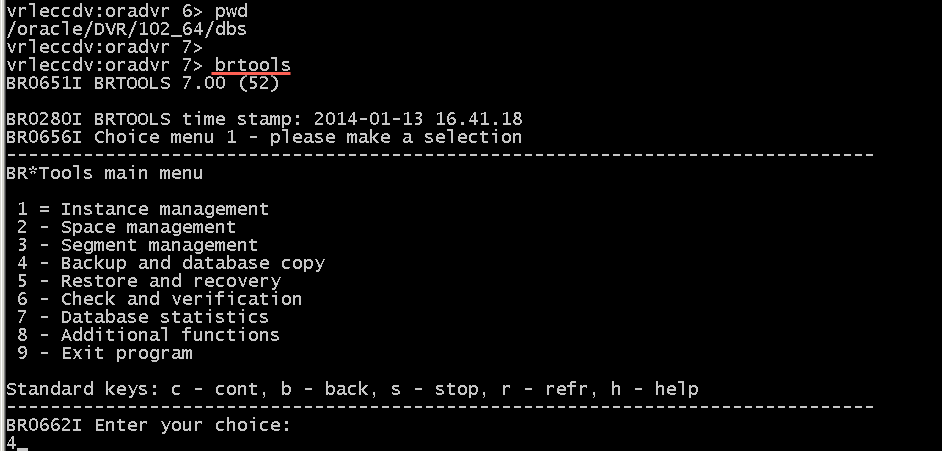
- Use, options 4 & 5 and follow the steps after to take backup or restore of SAP Database and archive redo-logs using SAP BRTOOLS utility.
